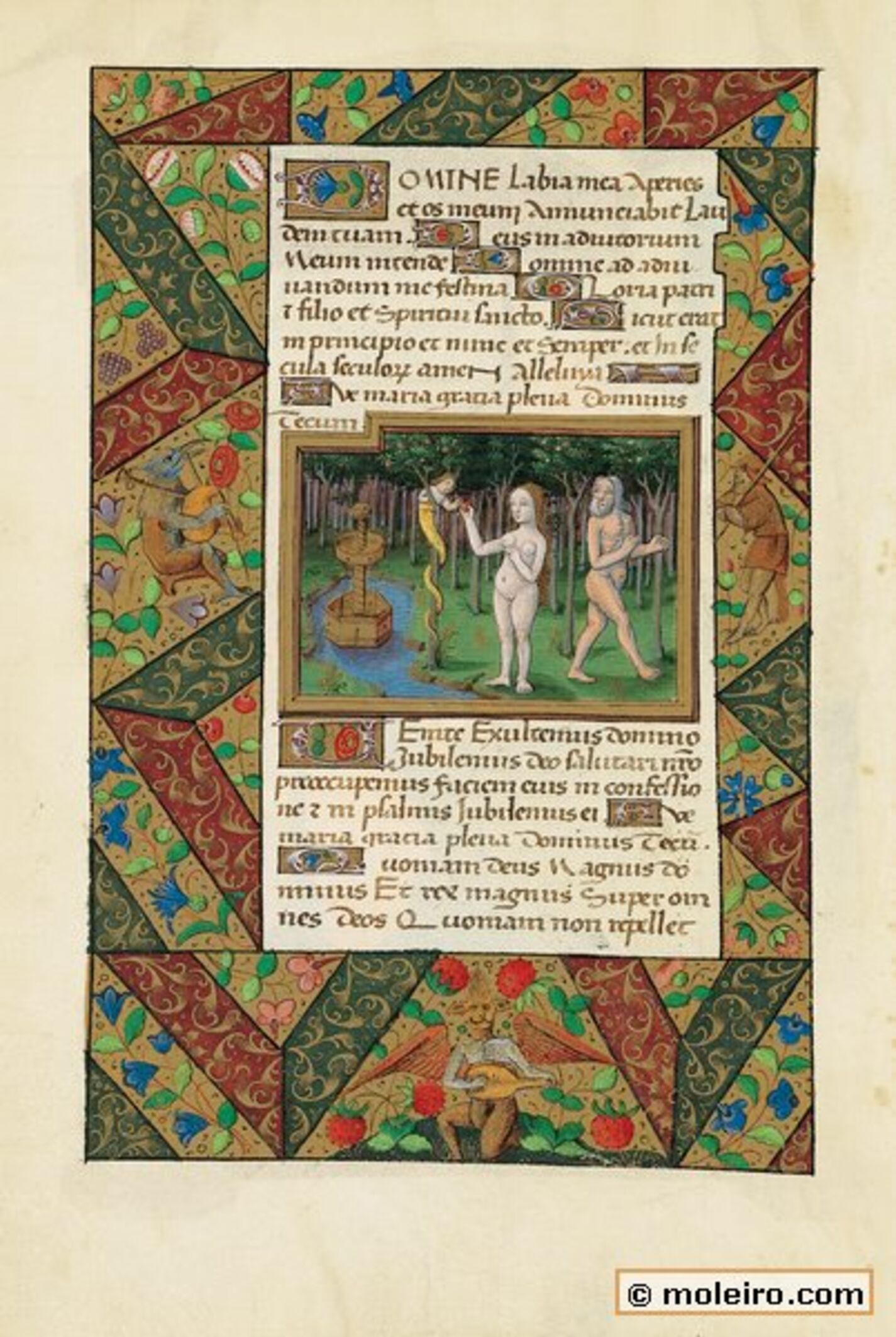This miniature comes at the beginning of Matins, between the invitatory and Psalm 94, “Venite Exultemus domino”, hence the frame drawn here, which has a notch on the top left, cannot have been the most suitable one since it should have surrounded both the illustration and the Psalm.
The picture portrays: the Garden of Eden with the fountain of Paradise springing from the waters of a river; the tree of knowledge of good and evil with a serpent with a human head and body wound around it, offering Eve the fruit, which she accepts; then Adam, apparently leaving the place, but looking back at Eve. The background is filled with many trees. The border contains a monster playing the horn, another playing the lute and a third dressed in military attire.
In the first place, it is not clear what kind of tree appears in this miniature. According to Latin tradition, it should be an apple tree but according to the translation by the Septaguint, it should be a fig tree. Nevertheless, artists’ directors usually chose a species that was common in the area where they lived. Byzantine and Italian artists made it a fig tree; however, except for some very marked exceptions, the apple tree, which only made its appearance in the 12th century, replaced all other species.
As for the serpent, in the Bible it appears as an instrument of the devil. In the illustration in the Book of Hours of Louis of Orléans, it has an asexual appearance whereas in many other representations showing the tempter in a semi-human form, it is usually portrayed with a smooth, delicate body and a female bust (in specie virginis or caput virgineum habens) to show it has the gift of speech or that, before the Fall, progenitors could understood animals, and also in recollection of the sirens of old.
Whilst listening to her tempter, Eve takes the forbidden fruit. This formula, found frequently in Byzantine art as can be seen in Exultet scrolls and a late 12th century Byzantine Bible (Paris, Bibliothèque nationale de France, ms. gr. 1186), is found in some miniatures in the West, such as the Codex Virgilianus (f. 17r) housed in El Escorial Library.
Adam’s pose gives the impression that he does not want to have anything to do with what is happening, since, for most theologians, Eve was mainly to blame for the sin when she came in contact with the serpent, as can be seen in a text by St Augustine when he says that the devil “chose [...] the snake, a lewd animal that writhes sinuously, suitable for the purpose of him speaking through its mouth. And [...] (it spoke to) the woman deceitfully, starting at the bottom of human society and gradually moving up to the rest, aware that a man would not be so gullible and could not be deceived by mistake except by accepting another’s mistake” (City of God: I. 14, c. 11). In the opinion of the bishop of Hippo, the sin was basically one of pride.
